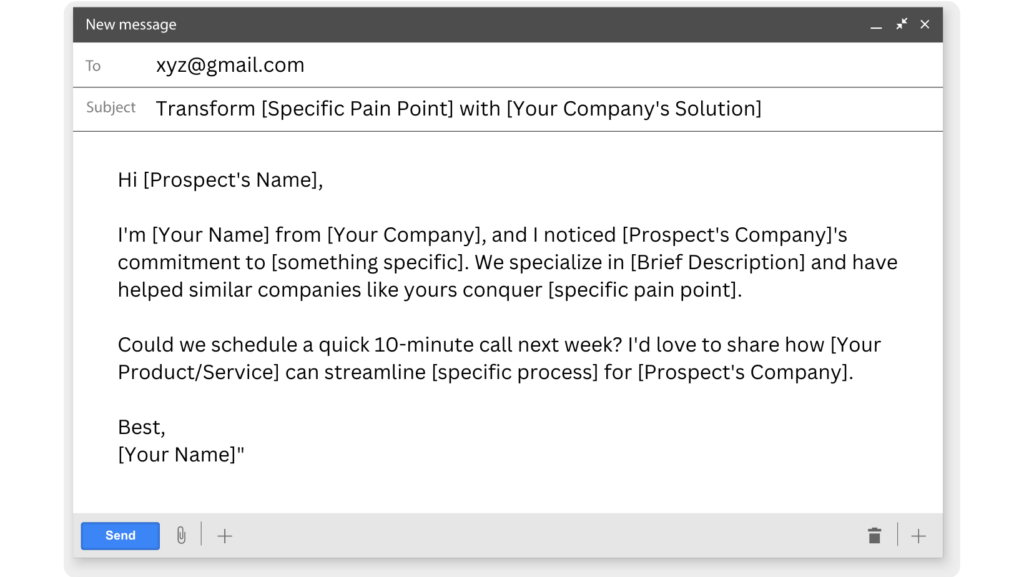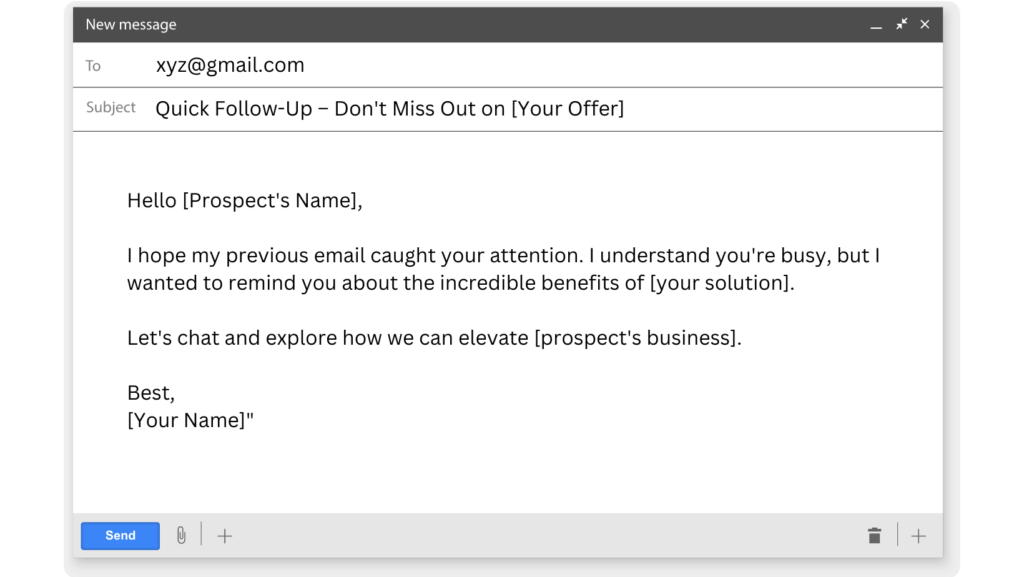In the hustle of sales and business growth, prospecting emerges as a backstage pass to success. However, 40% of salespeople agree upon the fact that prospecting is the most challenging part of a sales process mentions Salesmate.

So, if you’re struggling with the same issue, here are the top 9 sales prospecting techniques that can supercharge your sales game.
9 best prospecting techniques
1. Create an ideal customer profile
The first step in successful prospecting is defining your ideal customer. Take the time to understand your audience’s pain points, preferences, and demographics. Craft a detailed ideal customer profile that serves as your roadmap for targeted outreach.
By knowing your customers inside out, you can tailor your communication to resonate with their needs.
2. Cold emailing
When it comes to prospecting, cold emailing remains a potent tool. You can reach out to potential your customers who may not be familiar with your brand effectively.
However, make sure to craft emails that are both personalized and concise, resonating with your audience’s needs. Put the spotlight on the value your product or service offers. Make your subject lines compelling and your content engaging.
Remember, simplicity is your guiding star – ensure your message is easily digestible. A well-crafted email can be the key to starting meaningful conversations.
For instance,

Also, consider automating your efforts with a cold email automation tool like SafeMailer. It will help you schedule emails in a staggered manner, thus mimicking a human-like sending pattern. Eventually leading to improved email deliverability.
3. Follow up strategically
Persistence pays off. If at first, you don’t succeed, try, try again. Craft polite follow-up emails to remind your prospect about your offer and emphasize the value they’re missing out on. A well-timed follow-up can turn a cold lead into a hot prospect.
Here’s an example

4. Warm up your cold call
Once your lead has received the initial email, leverage that touchpoint to warm up your cold call. Reference the email in your call, acknowledging that you’ve shared valuable insights via email and expressing your eagerness to discuss how it can benefit them further. This integrated approach reinforces your message and increases the chances of a positive response.
Use the insights gained from your email interaction to personalize your cold call. Whether they engaged with specific content or showed interest in particular features, tailor your conversation accordingly. This level of personalization demonstrates genuine interest and sets the stage for a more meaningful discussion.
5. Focus on relationship building
Focus on building relationships. Take the time to understand your prospect’s pain points, challenges, and goals.
Ask open-ended questions and actively listen to their responses. Building rapport lays the foundation for a lasting connection.
6. Host a webinar
Position yourself as an industry authority by hosting webinars. These virtual events offer a platform to share valuable insights, address pain points, and engage with your audience directly.
During the event, interact with attendees, answer questions, and provide actionable insights. A successful webinar not only establishes your authority but also generates leads.
7. Ask for referrals
Your satisfied customers are your best advocates. Don’t overlook the power of asking for referrals. A simple request can open doors to a vast, untapped audience.
Leverage your existing relationships by encouraging satisfied customers to refer your products or services to their network.
8. Network at events
In-person networking remains a powerful prospecting technique. Attend industry events, conferences, and meetups to connect with potential customers and industry influencers. Prepare an elevator pitch that succinctly communicates your value proposition. Actively listen to others, ask open-ended questions, and exchange contact information. Personal connections forged at events can lead to long-term business relationships.
9. Seek partnerships for co-selling:
Collaborating with other businesses can amplify your prospecting efforts. Identify potential partners whose products or services complement yours.
Establish mutually beneficial relationships for co-selling, where both parties promote each other’s offerings. This strategic alliance expands your reach and introduces your business to a broader audience.
Conclusion
In wrapping up, remember: mastering prospecting isn’t rocket science. It’s about connecting the dots, understanding your customers, and reaching out with purpose.
So, go ahead, implement these prospecting techniques, and watch your outreach game skyrocket.

Leave a Reply